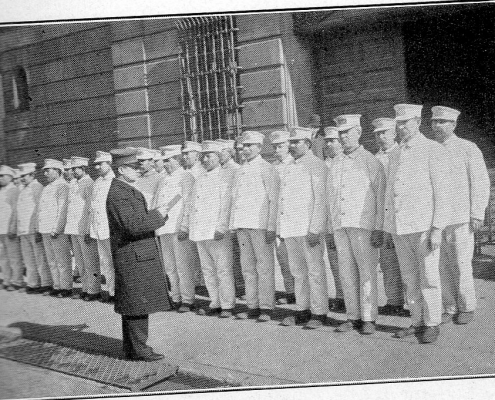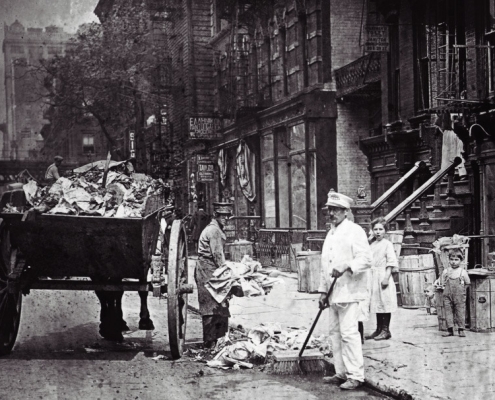From the History Books: How the White Wings Cleaned up New York City
Have you ever heard of Colonel George Waring? He’s kind of a big deal in the cleaning and sanitation world. Before he fought in the Civil War, Colonel Waring was a city engineer in New York, where he gained recognition for his work reclaiming the swampland that would become New York’s Central Park. He had helped develop a first-of-its kind drainage system that allowed for the lakes and ponds within the parks, while leaving the remainder of the land dry.
Following his success in New York, Waring left for Memphis, where he engineered a dual sewer and drainage system that separated storm runoff from septic waste. This ended decades of waterborne illnesses and diseases, including cholera, which had plagued the city for decades.
Lacking any formalized sanitation and refuse system, New York City was drowning in garbage and filth in the late 1800s. Its current mayor, William Strong, called for Waring to return and assume the position of sanitation engineer. The job of tackling the city’s overwhelming sanitation issues would be no easy feat, and Waring approached the job as he would approach combat on the battlefield.

Colonel George Waring transformed the image of the sanitation department in New York, dressing workers in white so they would be affiliated with hygiene and cleanliness.
His first initiative was to build an army of cleaners, equipped with ashcans and broomsticks as their weapons. But before he cleaned up the streets, he knew he needed to clean up the perception of the cleaners.
Street cleaners of the day were known for accepting bribes and generally slacking off on the job. To transform this image, Waring assembled a force of more than two thousand sanitation “soldiers” who were clad completely in white, from the white caps on their heads down to the pants covering their legs. The motivation was to associate workers with hygiene (though other sources indicate that it was to also make workers obvious and easily identifiable should they feel compelled to skip off to the saloon during their shift).
According to an article in Collector’s Weekly, Waring’s military-like structure included “very clearly defined tasks, like someone was assigned to sweep from this corner to that corner 10 blocks down, and they were going to do it inside these eight hours, and this cart was going to follow and the driver of the cart had these set hours. If there were any problems, the officer immediately in charge of that crew would have to answer for them, and then the officer above had to answer for the larger regional work.”
With his system in place, Waring and his army set to clean the poorest sections of the city (the more affluent areas had enlisted private cleaning services to clean up their streets). Initially, the sanitation workers were met with resistance, and local residents threw rocks and bricks at workers, fearful they intended to displace them. By the end of two weeks, the White Wings had won them over because their neighborhoods were clean. Eventually, the piles of trash throughout the city had been completely cleared.
After seven months of Waring’s sanitation leadership, The New York Times reported: “Clean streets at last… Marvels have been done.”

Workers clean up the streets of New York in the late 1800s.
Robin Nagle, author of Picking Up, noted, “These men became heroes because, for the first time in anyone’s memory, they actually cleaned the city. It was a very bright day in the history of the department…Rates of preventable disease went down. Mortality rates went down. It also had a ripple effect across all different areas of the city.”
Cleaning as a hygiene issue. A systematic approach to cleaning. Improving the perception of cleaners. Sound familiar?

